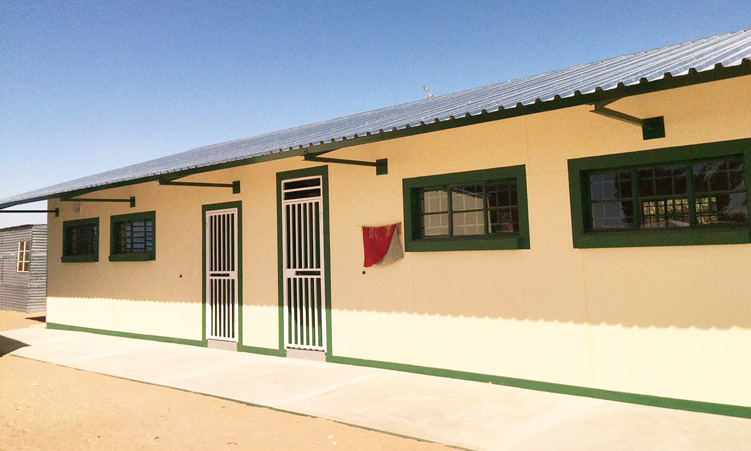The Directorate of Education, Arts and Culture in the Omusati Regional Council says the region needs at least 90 classrooms per year in order to meet the pressing needs of pupils.
This was revealed by chief education officer Auwa Matheus at the official handover of two classrooms and a storeroom block by the Social Security Commission to the Omalago Primary School in the Tsandi constituency on Thursday.
Matheus, who read a speech on behalf of acting education regional director Lars Kankondi, said the region is still far from meeting classroom needs.
“In order to achieve the required classrooms, we need at least 90 classrooms per annum. We are still far from attaining our classroom building needs. The ministry is trying its level best, but we are calling on individuals and those in the private sector to meet the government halfway,” Matheus said.
He further said the region comprises 300 public and private schools, with 4 375 teachers and 112 650 pupils in the current academic year.
This is an increase of 3 375 pupils from last year, he said.
“As we are speaking, we have 4 000 permanent classrooms and about 300 to 400 temporary classrooms (shacks).
Hence, your support, whether through financial contributions, resources or volunteer efforts, is invaluable in our ongoing mission to enhance the quality of education in our region.”
Omusati regional governor Erginus Endjala said considering the current growth rate of pupils enrolled in public schools in the region, the current need of 90 classrooms per year may soon increase to beyond 100 classrooms per year.
“This is specifically in the pre-primary and primary phase,” Endjala said, noting that the population growth is most clearly seen in the enrolment of lower grades.
He further said it is up to the government, private sector and community members to assist the education sector.
Endjala asserted that the education sector could potentially be the biggest employer with additional investment.
EXPIRED
In terms of school infrastructure, Matheus said schools built during the colonial era are falling apart.
“We have a challenge with those schools that were constructed in the 70s. Those schools are too old now. Their lifespans are kaput (finished). Now and then we are informed that a roof at a certain school has blown off or a building at a school has a big crack.”
Matheus urged stakeholders to work together to build more classrooms.
He said many classrooms were built with plank roofs, and rainwater has caused them to reach their lifespan.
Matheus also advised schools that have raised funds or received donations to construct classrooms to approach the directorate in order to receive free advice and building plans.
“We will give you a plan for free, because we have all the school building plans. If you want a laboratory, we have a plan and we will give you free advice, as well as work inspectors to inspect the building. This is to ensure that the buildings are strong and will last longer,” he said.
“I see that some schools just start building classrooms and I get angry, not because they are building the classrooms but because they are not adding value to the money. Come to our offices, we will give you recommendations of what bricks to buy,” he said.
Stay informed with The Namibian – your source for credible journalism. Get in-depth reporting and opinions for
only N$85 a month. Invest in journalism, invest in democracy –
Subscribe Now!










